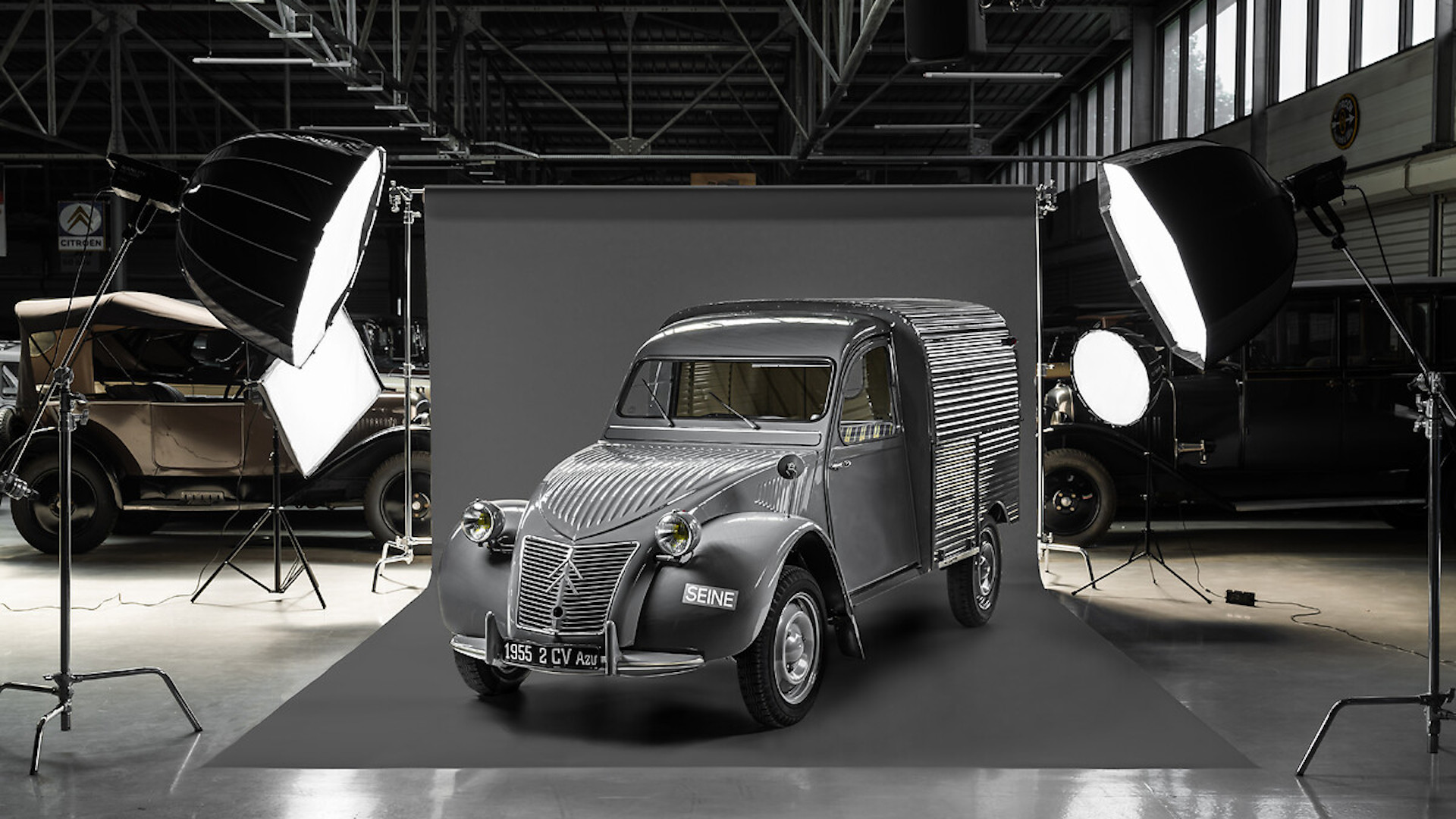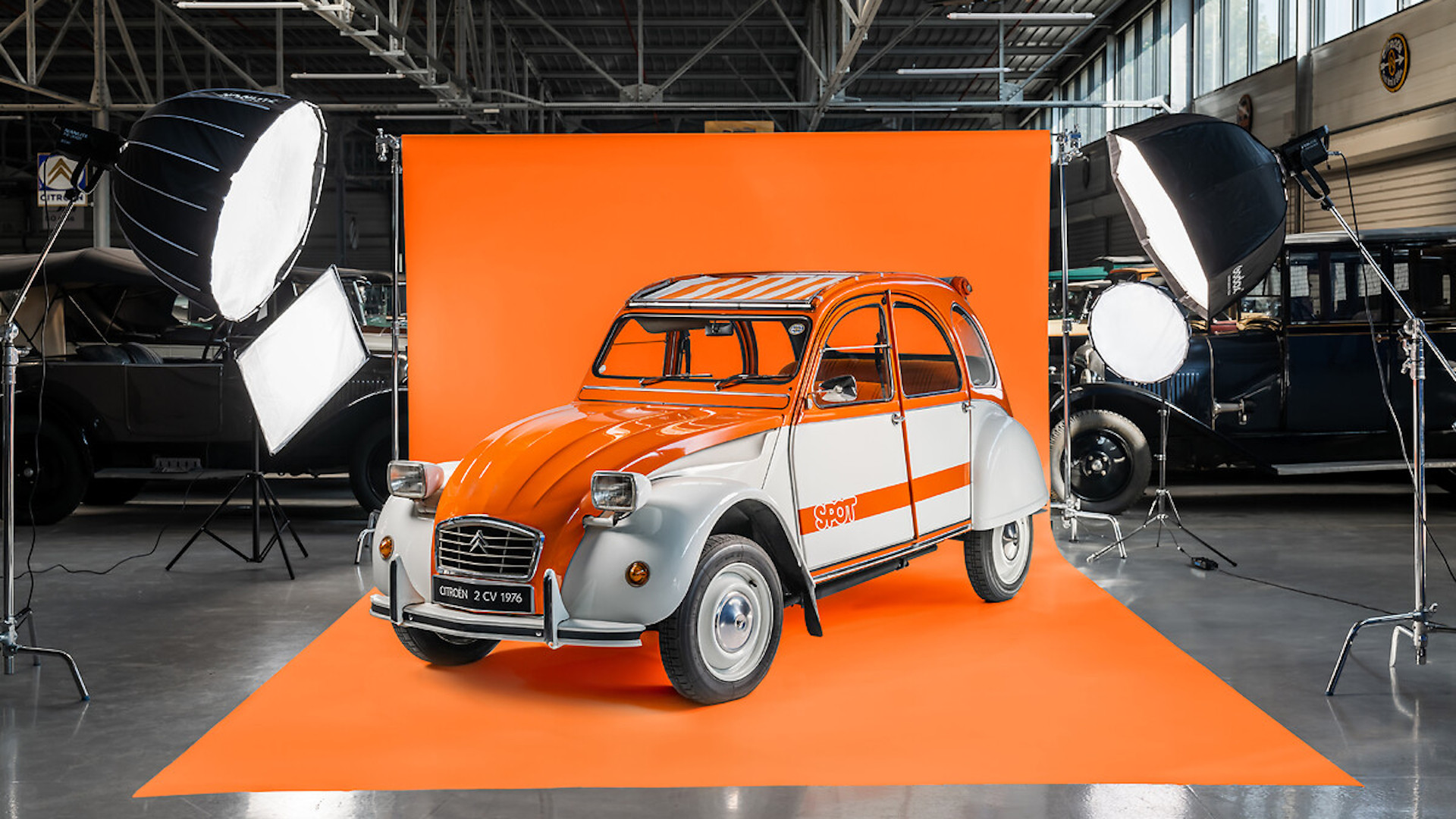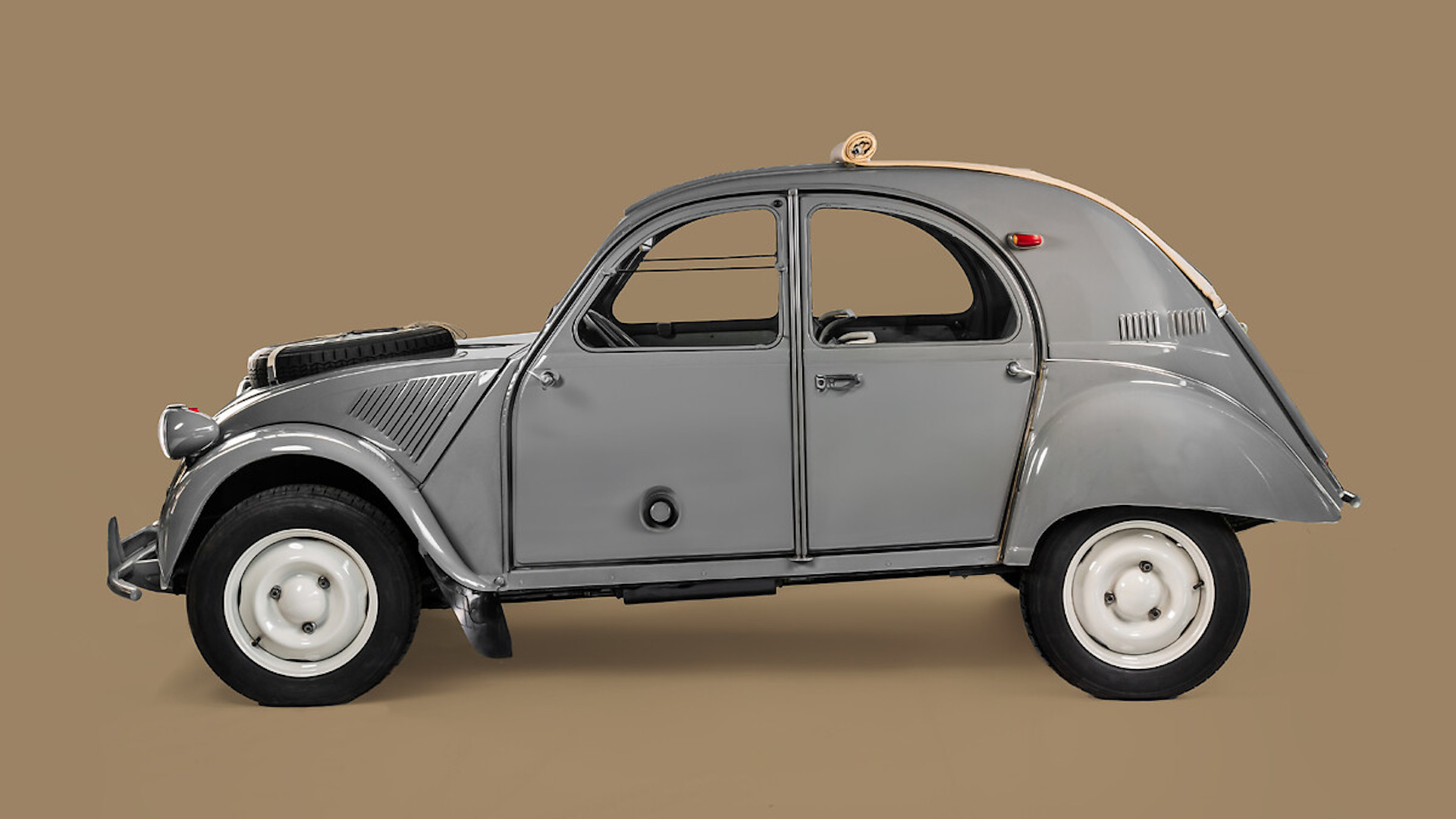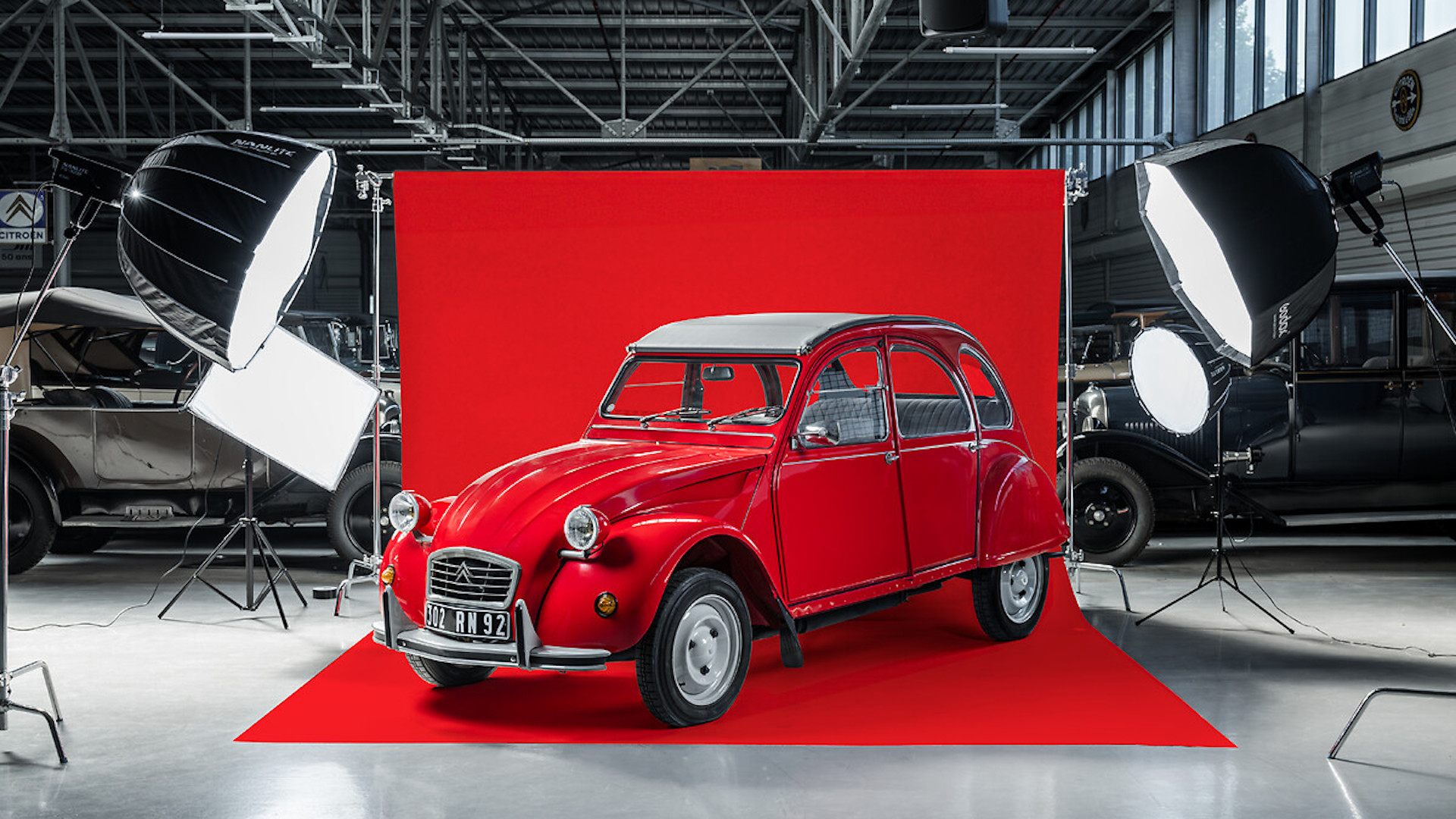Citroën has celebrated the 75th birthday of its iconic and legendary car, the Citroën 2CV, which saw over 5 million produced between 1949 and 1990. 2CV made its start in the ‘TPV’ (‘Toute Petite Voiture’ or ‘very small car’) project in 1936, which aimed itself at making cars versatile, economical and accessible to the masses, aspects which made it an icon, built on the Citroën's common features: popularity, comfort, simplicity, robustness, and affordability. Its unique shape and versatility were the key ingredients in its success which spanned several decades, and to celebrate the 3/4 of a century mark for the car, a photoshoot was held for it on the 7th October.
Citroën is celebrating the 75th birthday of its most classical and iconic car: the 2CV. Designed at the Citroën design office in Rue du Théâtre in Paris, and perfected at the La Ferté-Vidame test centre in the Eure-et-Loir region of France, the 2CV was first revealed to the public eye at the Paris Motor Show on the 7th October 1948. The 2CV enjoyed an outstanding lifespan with a grand total of 5,114,969 units produced, including 1,246,335 2CV vans. The very last 2CV left the Mangualde factory in Portugal at 4 PM on 27 July 1990, 42 years after it first launched.
The origin of the 2CV: The 'TPV' Project
The ‘TPV’ (‘Toute Petite Voiture,’ or ‘very small car’) project began in 1936, with a goal to provide people in low income households a versatile and economical car. In 1937 the first roadworthy prototype of the TPV project was produced, coming in at a weight of just 370 kg and featuring only one headlight (legislation at the time did not require two). The vehicle could carry up to four people and 50 kg of extra weight in luggage at a maximum speed of 31mph, being proportedly so comfortable that it could transport a basket of eggs across a freshly ploughed field without breaking a single one.
250 pre-production models were set to be revealed at the 1939 Paris Motor Show, but the start of World War 2 meant that this couldn't happen. The models which had been built were therefore destroyed – except for four, which were secretly stashed at the Citroën Test Centre at La Ferté-Vidame.
A legendary car that has become iconic in the motor world
When it entered production in July 1949, the 2CV was a small car with a 9 bhp, 375 cc, air-cooled, flat-twin engine capable of reaching a top speed of 31mph. Citroën had made a revolutionary step in the car industry by providing a versatile and affordable car.
Its unique body shape and people’s interest in cars quickly won over a large proportion of the population, but its huge success can also be attributed to its limitless different uses, as well as its removable benches, its lightness, agility and comfort. It was also incredibly economical to keep running, making it the most popular car in France. By 1950, orders were flooding in, pushing delivery times up to 6 years.
Its avant-garde spirit, combined with ingenious technologies for the time, made sure it retained its hold over part of the motoring scene for many years. The 2CV is a timeless model that has become a social phenomenon embedded in pop culture, drawing in collectors from all over the world and featuring regularly on television screens.
To this day, it is still frequently seen on the roads, and it has earned many nicknames. Some of the best known are ‘Flying Dustbin’, ‘Tin Snail’ and ‘Ugly Duckling’, to name but a few. The wide variety of nicknames shows just how popular this historic and iconic model was.
Several versions across the world
Overall, there were 10 special editions of the 2CV, that launched in France and a number of other European countries, including the Spot, the Charleston and the Cocorico. The 2CV also recieved several changes across its lifetime, including the release of the 2CV van (known as the 2CV AU) in 1951, and the 2CV AZ in 1954, which came equipped with a 12 bhp engine and the famous centrifugal clutch.
The 2CV’s ruggedness and ease of maintenance make it a continued favourite for some of the roughest journeys in the world – such as the 10,252-mile Paris-Kabul-Paris Raid in 1970, the 8,388-mile Paris-Persépolis Raid in 1971 and the 4,970-mile Africa Raid from Abidjan to Tunis in 1973, all three organised by Citroën.
8 iconic 2CVs photographed for the special occasion
To mark the anniversary, eight iconic 2CVs from Citroën’s collection will be displayed and photographed at the Citroën Conservatoire to show off their unique styles:
- The 2CV 6 by Hermès, dressed by Hermès inside and out, was paraded at the 2008 Paris Motor Show to mark the 60th birthday of the 2CV.
- The 2CV 6 Spécial, one of the final 2CVs produced at the Levallois plant in 1988
- The 2CV Spot, Citroën's first special edition, 1,800 of which were built with two-tone upholstery and bodywork based on a design by stylist Serge Gevin.
- The 2CV A, one of 250 prototypes built in 1939 for the Motor Show, which ended up being cancelled and destroyed because of the war, leaving only 4 remaining.
- The 2CV A Berline (1950), an identical copy of the one unveiled by Pierre Boulanger at the opening of the Paris Motor Show in 1948.
- The right-hand-drive 2CV A, built in Slough (UK) from 1953. It had a sheet-metal boot and opening rear windows. Currently, it remains the oldest British 2CV in Europe.
- The 2CV AZU, a 2CV van produced between 1954 and March 1978, has a large load capacity and rear ‘cupboard’ doors for easy loading.
- The 2CV 4 x 4 ‘Sahara’, with four-wheel drive and dual engines that allow it to traverse gradients of over 40% in the sand.

 Find us
Find us
 Contact Us
Contact Us


 My account
My account

















